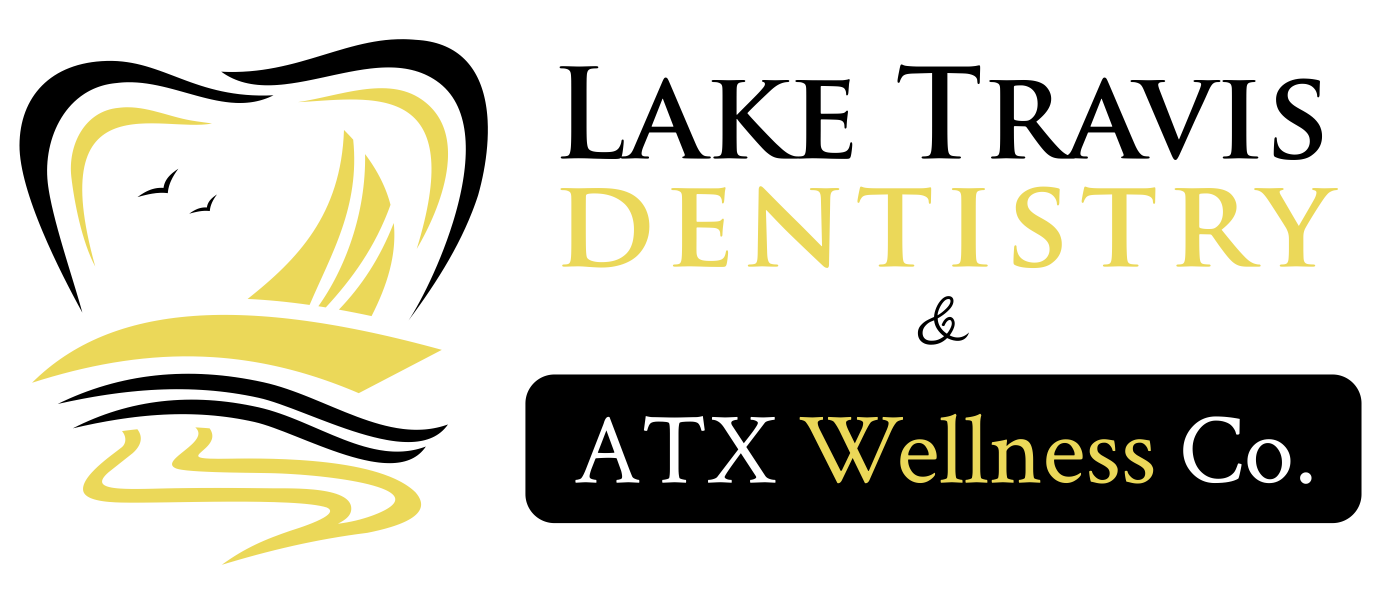- Membership
- Services
Integrated Wellness
Your journey to a radiant, healthy smile begins here!
- Insurance & Financing
- Smile Transformations
- Products
- About
Meet our accomplished team of doctors, devoted to providing expert care and personalized attention for your optimal dental well-being.
Get acquainted with our skilled and compassionate dental professionals—dedicated to ensuring your oral health and brightening your smile.
Here are the dental care blogs from Lake Travis Family & Cosmetic Dentistry. Our oral health blogs give you insights about dental treatments & oral health!
Get Invisalign Today and Save $1200

Root Canal Therapy in Lakeway, TX

Root canal therapy is required when a tooth’s nerve is infected or decayed. The pulp (the live tissue inside the tooth), nerves, germs, and any decay are removed to save the tooth, and the resulting space is filled with special, medicated dental materials that restore the tooth to full function.
If left untreated, infected or inflamed pulp can lead to severe pain, tooth loss, and even systemic infections. That’s why it’s crucial to seek prompt treatment if you experience any of the following symptoms:
- Severe toothache pain
- Prolonged sensitivity to hot or cold liquids
- Tooth discoloration
- Swelling or tenderness in the nearby gums
A root canal is the therapy of choice at Lake Travis Family & Cosmetic Dentistry for saving a tooth that would otherwise die and have to be extracted.
How Is Root Canal Therapy Performed?
The root canal specialist will perform root canal treatments in one or several appointments.
Here’s what to expect:
- A rubber dam, a sheet made of rubber, will be placed around the tooth while it is numb to keep it dry and free of saliva. On top of the tooth, several root canal files are inserted one by one, extracting the pulp, nerve tissue, and bacteria.
- If there is tooth decay, it will be treated with special dental devices. After the tooth has been fully cleaned, it will be sealed with either a permanent or temporary filling if more appointments are required.
- The roots and internal cavity of the tooth will be filled and sealed with specific dental materials during the next session, which is generally a week later. We will fill the opening on top of the tooth with a filling. A dental crown, or dental cap, should be placed on all teeth with root canal therapy. This will safeguard the tooth, preventing it from fracturing and restoring its full functionality.
- After treatment, your tooth may remain sensitive, but this will fade as the inflammation subsides and the tooth heals. After each appointment, you will be given information on how to take care of yourself. Your root canal treatment will last longer if you practice good oral hygiene and visit the dentist regularly.
At Lake Travis Family & Cosmetic Dentistry, we prioritize your comfort, safety, and overall oral health. If you’re experiencing any symptoms that may indicate the need for root canal therapy, don’t hesitate to contact us. Worried about the cost? You shouldn’t! We offer a dental membership plan that provides exceptional value and convenience for our patients.
By joining our membership program, you can enjoy the following benefits:
- Free routine exams, x-rays, and cleanings
- 20% off most other dental services
- No waiting periods or annual maximums
- 10% off Zoom! whitening treatments
- Up to 10% off all other dental services
Our membership plan is designed to make high-quality dental care more accessible and affordable, especially for those without traditional dental insurance. By joining, you can save significantly on your dental expenses while receiving the exceptional care you deserve from our experienced team.
FAQs
How long does a root canal procedure take?
The duration of root canal therapy can vary depending on the complexity of the case and the number of root canals involved. On average, a root canal procedure can take anywhere from 30 minutes to 2 hours. However, some cases may require multiple visits, especially if the infection is severe or if there are curved or narrow tooth root canals that are difficult to access and clean. During the procedure, the dentist or endodontist will numb the area with local anesthesia and create an opening in the tooth to access the infected pulp chamber and remove the diseased pulp tissue containing blood vessels and soft connective tissue.
Is root canal therapy painful?
Many patients are apprehensive about root canal treatment due to the misconception that it is a painful procedure. However, with modern techniques and proper anesthesia, most patients experience little to no pain during the root canal itself. In fact, the endodontic treatment is designed to relieve the pain caused by the infected tooth or tooth pulp infection.
Some mild discomfort or sensitivity may occur after the procedure, but this can be managed with over-the-counter pain medication. If left untreated, the infection can spread to the surrounding bone, adjacent teeth, and nearby gums—potentially leading to more severe pain and tooth loss.
How long does a root canal last?
With proper care and maintenance, a root canal can last a lifetime. However, the longevity of a root canal treatment depends on several factors, such as the patient’s oral hygiene habits, the presence of other dental issues, and the quality of the final restoration (permanent filling or permanent crown).
On average, root-canal-treated natural teeth can last for 10-15 years or more with good oral health practices. During the procedure, the dentist will clean and disinfect the root canals, fill them with a rubber-like material called gutta-percha, and seal them to prevent reinfection.
Can I eat normally after root canal therapy?
After a root canal therapy procedure, it’s recommended to avoid chewing on the treated tooth until it has been properly restored with a permanent filling or crown. This is because the natural tooth may be weakened and more susceptible to fracture. Patients should also avoid hard, crunchy, or sticky foods that could dislodge the temporary filling or cause discomfort.
Once the permanent restoration is in place, patients can typically resume their normal diet, but it’s still advisable to avoid extremely hard foods that could damage the crown or filling. The American Association of Endodontists recommends avoiding chewing on the treated tooth until the permanent restoration is complete.
What are the signs of a failed root canal?
While root canal therapy has a high success rate, there is a possibility of treatment failure in some cases. Signs of a failed root canal include persistent or recurring pain, swelling in the nearby gums or face, a pimple-like bump on the gums, or a darkening of the treated tooth. If any of these symptoms occur, it’s important to schedule an appointment with your dentist or endodontist for evaluation and potential retreatment or extraction.
In some cases, a root canal may need to be redone if the infection persists or if the sealer paste or gutta-percha filling material becomes dislodged, allowing bacteria to re-enter the root canals. X-rays may be taken to assess the condition of the treated tooth and surrounding tissues.



